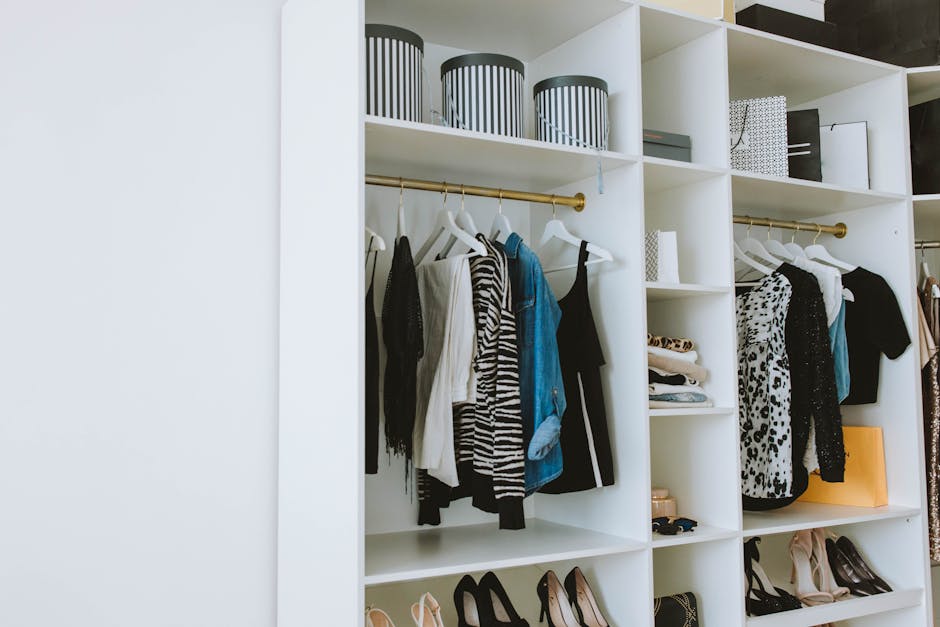
How Much Loose Leaf Tea for a Perfect Pitcher?
When it comes to brewing a refreshing pitcher of tea, the choice of ingredients makes all the difference. *Loose leaf tea* offers a depth of flavor and aroma that pre-packaged tea bags simply can't match. The art of perfecting the ideal pitcher begins with understanding the nuances of loose leaf tea. From the type of tea leaves to the brewing time and water temperature, every detail plays a crucial role in crafting a memorable beverage.
One of the primary reasons enthusiasts prefer loose leaf tea is its superior quality. The larger leaves, buds, and visible pieces of flowers or fruit provide a richer, more nuanced taste compared to the finely ground dust found in most tea bags. Additionally, loose leaf tea allows for better water circulation, ensuring that the leaves unfurl fully and release their complete flavor profile.
However, the question remains: *how much loose leaf tea for a pitcher* is ideal? This is where many tea lovers find themselves in a conundrum. The amount of tea leaves required can vary based on several factors, including the type of tea and personal taste preferences. Generally, a good starting point is to use about one tablespoon of loose leaf tea per cup of water, but this can be adjusted to suit your desired strength.
Ready to embark on your journey to the perfect brew? Visit us today to explore your own magic of the perfect brew at Darkness of the Twilightmoon.
Advantages of Using Loose Leaf Tea

Choosing *loose leaf tea* over tea bags offers a multitude of advantages that can significantly enhance your tea-drinking experience. One of the foremost benefits is the superior quality of loose leaf tea. The larger tea leaves, which remain intact during processing, retain more of their natural oils and flavor compounds. This results in a richer, more aromatic brew that’s both satisfying and complex.
Another advantage is the ability to customize your tea experience. With loose leaf tea, you can blend different types of teas, adding herbs, spices, or dried fruits to create a unique flavor profile tailored to your taste. This level of personalization is rarely possible with pre-packaged tea bags, which are designed for convenience rather than customization.
Loose leaf tea also offers better health benefits. Since the tea leaves are less processed, they maintain higher levels of antioxidants and essential nutrients. Studies have shown that these compounds can help reduce the risk of chronic diseases, improve mental alertness, and promote overall well-being.
Furthermore, the environmental impact of loose leaf tea is significantly lower compared to tea bags. By choosing loose leaf, you reduce the need for single-use packaging, which often contains plastic and other non-biodegradable materials. This makes loose leaf tea a more sustainable option for the eco-conscious consumer.
Whether you’re a seasoned tea aficionado or new to the world of tea, the advantages of using loose leaf tea are undeniable. From enhanced flavor and health benefits to environmental sustainability, loose leaf tea offers a more enriching and responsible way to enjoy your favorite beverage.
Choosing the Right Tea for Your Pitcher
Selecting the *right tea for your pitcher* is crucial to achieving the perfect brew. With an array of loose leaf teas available, it can be overwhelming to decide which one to choose. However, understanding the characteristics of each type can help you make an informed decision.
Black tea is a popular choice for pitchers due to its robust flavor and high caffeine content. It’s perfect for making iced tea or sweet tea, which are refreshing for hot summer days. Varieties like Assam, Earl Grey, and Darjeeling offer distinct flavors that can cater to different taste preferences.
If you prefer a lighter, more delicate flavor, green tea is an excellent option. Known for its subtle taste and numerous health benefits, green tea such as Sencha, Matcha, or Jasmine Green can provide a refreshing and calming beverage. Green tea is also rich in antioxidants, making it a healthy choice.
Herbal teas are a fantastic caffeine-free alternative. Varieties like chamomile, peppermint, and hibiscus are not only flavorful but also offer various health benefits. For instance, chamomile is known for its calming properties, while hibiscus can help lower blood pressure.
For those who enjoy a unique and exotic flavor profile, oolong tea and white tea are worth trying. Oolong tea, with its partially fermented leaves, offers a complex taste that lies somewhere between black and green tea. White tea, on the other hand, is known for its delicate and slightly sweet flavor.
Finally, consider the seasonal aspect when choosing your tea. During warmer months, opt for lighter, more refreshing teas like green or white tea. In contrast, richer and more robust teas like black or oolong are perfect for colder seasons.
By considering your taste preferences, desired health benefits, and even the season, you can select the right loose leaf tea to brew the perfect pitcher every time.
Measuring Loose Leaf Tea for a Pitcher

Getting the measurement right is essential when preparing a perfect pitcher of loose leaf tea. The general rule of thumb is to use one teaspoon of loose leaf tea per cup of water. For a standard pitcher, which typically holds about eight cups of water, you would need approximately eight teaspoons of loose leaf tea. However, this can vary depending on the type of tea and your personal taste preferences.
Black teas are usually more robust, so one teaspoon per cup should suffice. If you prefer a stronger brew, you can add an extra teaspoon or two to the pitcher. For green teas, which are more delicate, sticking to the one teaspoon per cup rule is advisable. Green tea can become bitter if over-steeped or if too much tea is used.
Herbal teas can vary widely in strength and flavor. As a general guideline, use one to one and a half teaspoons per cup. Herbs and flowers tend to be less dense than tea leaves, so you might need a little extra to achieve the desired flavor.
When using oolong or white teas, you may find that one to one and a half teaspoons per cup is ideal. These teas have more subtle flavors that can be overwhelmed if too much tea is used. Additionally, oolong tea leaves often expand significantly during steeping, so it's essential not to overfill your pitcher.
To ensure the best results, consider using a kitchen scale to measure your tea. This can help you achieve a more precise measurement, especially for bulkier or lighter teas. For instance, a standard teaspoon of black tea typically weighs about 2.5 grams, while a teaspoon of white tea may weigh only 1.5 grams.
Remember that these measurements are guidelines, and the perfect brew depends on your taste preferences. Feel free to experiment by adjusting the amount of loose leaf tea to find your ideal strength and flavor.
Brewing Tips for a Perfect Pitcher of Tea

Brewing a perfect pitcher of tea goes beyond just measuring the right amount of loose leaf tea. Here are some essential tips to help you master the art of brewing:
1. Use Fresh, Cold Water: The quality of water can significantly affect the taste of your tea. Always use fresh, cold water, preferably filtered, to ensure the purest flavor. Avoid using distilled or previously boiled water, as it can result in flat-tasting tea.
2. Preheat Your Pitcher: To maintain the ideal steeping temperature, preheat your pitcher by rinsing it with hot water before adding your tea leaves and boiling water. This step helps to prevent the tea from cooling down too quickly.
3. Optimal Water Temperature: Different types of tea require different water temperatures for the best flavor extraction. For black teas, use water that's just off the boil (about 200-212°F). Green and white teas are more delicate and should be brewed at lower temperatures (around 170-185°F). Oolong teas are best brewed at 190-200°F.
4. Steeping Time: Over-steeping can lead to bitterness, while under-steeping might result in weak flavors. Follow these general guidelines for steeping times:
- Black tea: 3-5 minutes
- Green tea: 2-3 minutes
- White tea: 4-5 minutes
- Oolong tea: 4-7 minutes
- Herbal tea: 5-7 minutes
5. Stirring and Straining: After the steeping time is over, give the tea a gentle stir to distribute the flavors evenly. Then, strain the tea leaves using a fine mesh strainer or tea infuser. This helps to prevent over-extraction and ensures a smooth, clean cup of tea.
6. Cooling and Serving: If you prefer iced tea, allow the hot tea to cool to room temperature before refrigerating it. This helps to maintain the tea's clarity and flavor. Serve your tea over ice with fresh lemon slices, mint leaves, or a touch of honey for added flavor.
By following these brewing tips, you can ensure that every pitcher of tea you make is perfectly balanced and refreshingly delicious. Experiment with different types of tea and brewing methods to discover what works best for you.
Common Mistakes to Avoid When Brewing

Even seasoned tea enthusiasts can fall into the trap of making common mistakes that can affect the quality of their brew. Here are some pitfalls to avoid when brewing your perfect pitcher of tea:
1. Using Too Much or Too Little Tea: The balance of tea leaves to water is crucial. Using too much tea can result in a bitter, overly strong brew, while too little can make your tea taste weak and insipid. Stick to the recommended amounts to achieve the perfect flavor.
2. Incorrect Water Temperature: One of the most common mistakes is using boiling water for all types of tea. Each tea variety has an optimal brewing temperature, and using the wrong one can either scald the leaves or fail to extract the full range of flavors. Always check the recommended temperature for the type of tea you are brewing.
3. Oversteeping: Letting your tea steep for too long can lead to a bitter and astringent brew. Be mindful of the steeping times specific to each type of tea and use a timer to ensure you don't overstep the mark.
4. Not Storing Tea Properly: Exposure to air, light, and moisture can degrade the quality of your tea leaves. Store your loose leaf tea in an airtight container, away from direct sunlight and strong odors, to preserve its freshness and flavor.
5. Reusing Old Leaves: While some high-quality teas can be steeped multiple times, most loose leaf teas will lose their flavor after the first steeping. Avoid reusing old leaves to ensure each brew is full of flavor and aroma.
6. Ignoring Water Quality: The quality of water you use can significantly impact the taste of your tea. Using tap water with high mineral content or chlorine can result in an off-tasting brew. Opt for filtered or spring water for the best results.
By being aware of these common mistakes, you can avoid them and enjoy a consistently excellent tea experience. For more tips and to explore our selection of gourmet teas, visit us today to explore your own magic of the perfect brew at Darkness of the Twilightmoon.